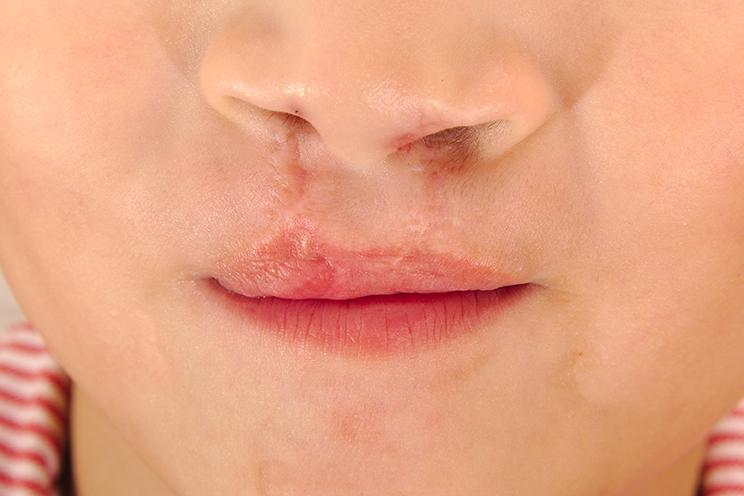Post Views: 2,341
Views No Comments
Every year in the U.S., at least one in every two-thousand newborns is reported to be born with a craniofacial condition. What does that mean? In simple terms, a cleft or craniofacial condition is a condition involving the skull or the facial structure. While these children are found to be born with one of these conditions, other children are found to be developing such a condition later in childhood. The increasing number of cases in the United States demands us to learn about these conditions. Only the knowledge about a condition would help us if we come in a position to face it. Here, get to know about the cleft and craniofacial conditions and try to understand them.
Most Common Cleft and Craniofacial Conditions
It’s to be understood that there are several types of deformities when it comes to craniofacial conditions. Of these, the most commonly reported conditions are as follows:
Isolated Cleft Lip and Palate
The cleft lip is the fourth most commonly noted birth defect in the country. This is also one of the most common congenital facial disorders. As per the reports, one in every seven hundred newborns is found to be affected by this condition. A cleft lip is a condition in which there will be a separation of the two sides of the child’s lip. This separation would often involve the bones of the upper jaw or upper gum. On the other hand, the cleft palate is the aperture in the ceiling of the child’s mouth wherein the two sides of the child’s palate didn’t fuse. It’s to be noted that a cleft lip or palate can occur on only one side or on both sides. Also, it’s possible for the child to have a cleft lip, a cleft palate, or both.
If left untreated, children with cleft lip or palate would have to use specially-designed bottles for feeding purposes. These babies would also have to eat in smaller quantities and hence, have to take food more often. This is why children with unrepaired cleft lip or palate are often found to be underweight. So, what might be the cause of cleft lip or palate? As mentioned earlier, this condition can be acquired by children at birth (congenital) and thus, their genes could be a cause. These conditions can also be due to other environmental factors like:
The possible complications of having cleft lip or palate would include difficulty in speaking and speech sounds. These children would also tend to be more susceptible to middle ear infections and dental cavities. Typically, the treatment would involve surgery, dental care, and speech therapy.
Microtia
This, which is otherwise called as aural atresia, is the condition in which children would have an underdeveloped or no outer ear. Due to this, these children would also have an underdeveloped or absence of the middle ear and ear canal. More usually, only one ear would be affected and is found to be affecting boys more than girl children. It’s to be noted that in most of the microtia cases, the inner ear is found to be unaffected and hence, the affected children can hear normally as only one ear has the defect and the other ear would function normally. However, the condition can also be bilateral at times, affecting both of the ears. These children will not be able to hear without any aid.
So, what causes microtia? The actual cause of microtia seems to be unclear. It has been predicted that this condition might be due to the lack of blood supply to the ear in the developmental stage. It could also have been caused due to certain medications during maternity and other environmental factors. The possible complications of microtia would include:
How can this be treated? A typical treatment of microtia would involve a surgery to open up the ear canal. Medical advancements have enabled the current-day doctors to create the outer ear and give the affected child a typical look. Some children would need a hearing aid to hear.
Hemifacial Microsomia
Children with this condition would have an underdeveloped face (usually on one side). This underdevelopment would usually involve the ear, mouth, as well as the jaw. Due to this, one side of the child’s face would be smaller than the other. In most cases, the outer ear would be malformed or totally absent, and the children would have difficulties in hearing and speech. In severe cases, the skull, teeth, upper jaw and jaw muscles, and middle ear would also be affected. Here again, the actual cause is not known. It has been predicted that this may be due to the burst blood vessel in the face in the developmental stage.
The possible complication of hemifacial microsomia is found to be Goldenhar syndrome. The treatment of the condition would involve surgery and speech therapy.
The above-mentioned conditions are only the most common ones. Apart from these common craniofacial conditions, there are also syndromic cleft lip/palate, craniofacial clefts, craniofacial syndromes, congenital ear deformities, vascular anomalies, soft tissue tumors, and pediatric traumatic deformities. Thus, this is a vast field that needs to be studied for every one of us.
Every year in the U.S., at least one in every two-thousand newborns is reported to be born with a craniofacial condition. What does that mean? Keep reading to learn about cleft and craniofacial conditions.

